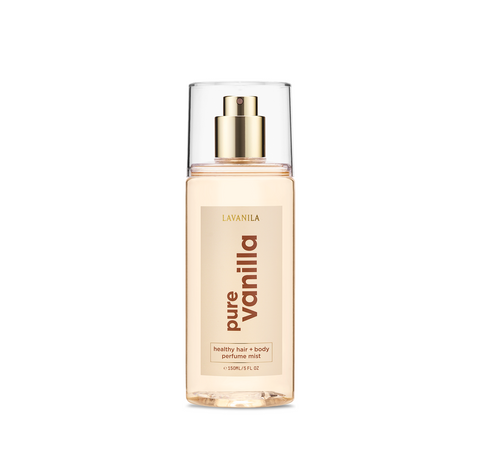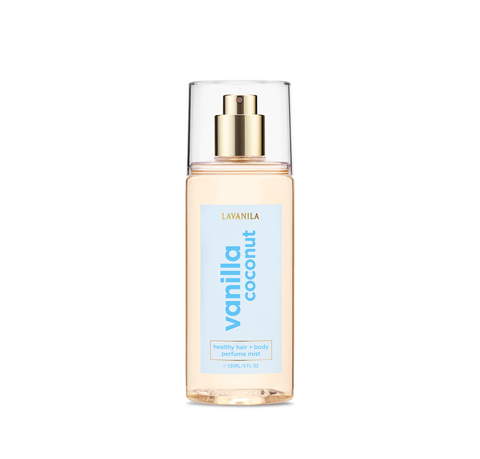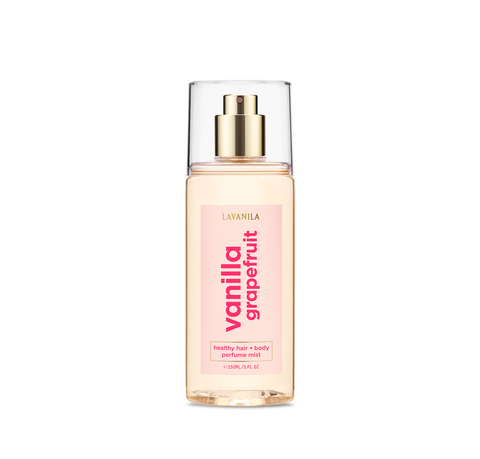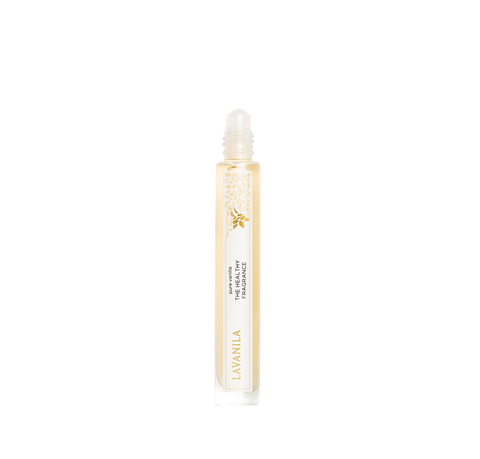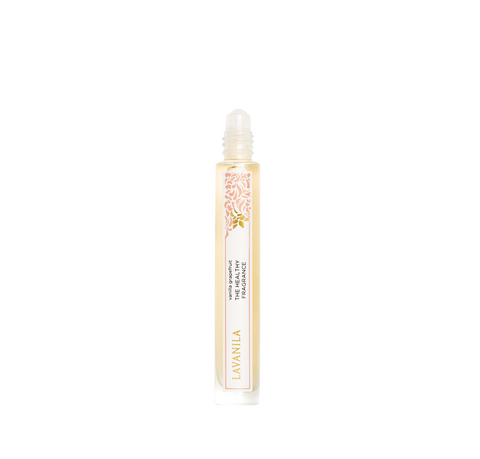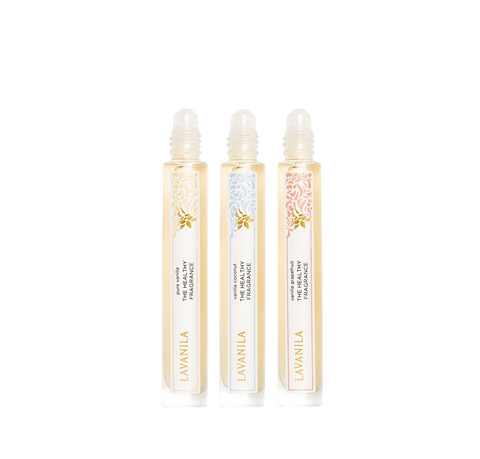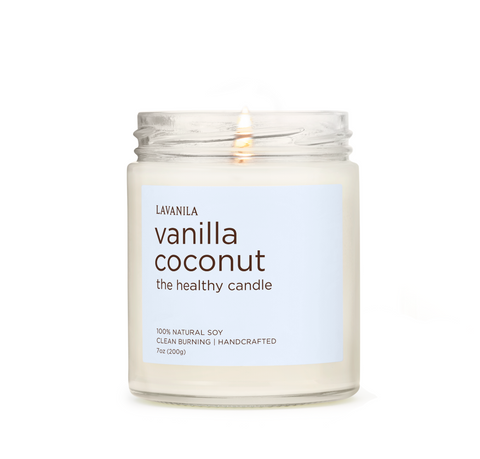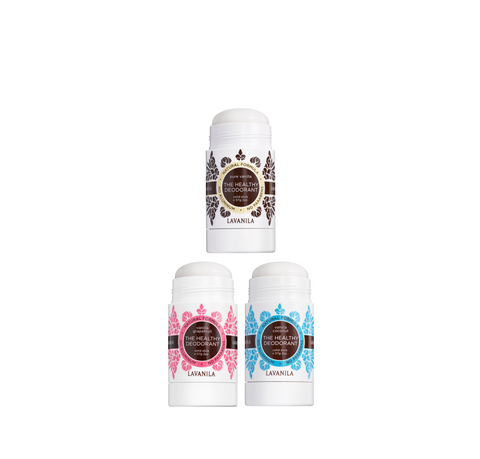When it comes to personal care, deodorants are a daily staple, helping people stay fresh and confident. Yet, few stop to consider what is inside these products. With the growing awareness of chemical exposure in everyday items, understanding the risks associated with deodorants has never been more important. Questions such as does deodorant cause poisoning, what are the symptoms of deodorant poisoning, and is deodorant poisonous are increasingly common among health-conscious consumers.
Many deodorants on the market contain a mix of synthetic fragrances, preservatives, and other chemical agents. While these ingredients may provide long-lasting scent or antibacterial effects, they can sometimes lead to adverse reactions in sensitive individuals. The conversation around deodorant safety is not just about immediate irritation—it extends to long-term wellness and environmental impact.
Today, consumers are asking more targeted questions: Which ingredients are safe? How do prolonged exposures affect the body? And, for pet owners, is deodorant poisonous to dogs? Awareness of these factors is essential, as even low-level exposure over time can contribute to health concerns. Natural, plant-based deodorants, such as Lavanila’s line, are designed to minimize these risks while maintaining effective odor control, providing a safer and cleaner alternative.
15% Discount on Your First Order
Subscribe for exclusive sales and promo codes
- Enjoy a 15% discount on your first purchase
- Be the first to know about our special sales and promotions
- Receive unique promo codes available only to our subscribers
What Is Deodorant Poisoning?
Understanding deodorant poisoning requires distinguishing between normal, mild reactions and more serious toxic exposure. While most users experience only minor irritation, certain chemical components in conventional deodorants can cause systemic effects when absorbed through the skin, inhaled, or accidentally ingested.
Defining Deodorant Poisoning in Everyday Terms
Deodorant poisoning occurs when the body reacts negatively to the chemicals found in deodorant products. These reactions can be acute, showing up within hours, or chronic, developing over long-term exposure. Typical triggers include synthetic fragrances, parabens, aluminum compounds, and volatile organic compounds (VOCs).
Common signs of deodorant poisoning may initially appear as skin irritation or mild discomfort but can escalate to more systemic symptoms if exposure continues. Understanding the mechanisms behind these reactions is key to recognizing potential toxicity and making safer product choices.
How Exposure Can Affect Humans
The effects of deodorant poisoning in humans are varied. The skin is the largest organ of absorption, and ingredients applied under the arms can enter the bloodstream more readily, especially when shaved skin is exposed. Beyond skin reactions, inhalation of fragrances or accidental ingestion—particularly in children—can contribute to headaches, nausea, and even dizziness.
Repeated exposure to certain synthetic compounds, like phthalates or heavy metals, may influence hormone activity or trigger allergies in sensitive users. Although severe poisoning is uncommon, being informed about the signs and symptoms allows for proactive measures and safer deodorant selection.
Is Deodorant Poisonous? Separating Myths from Facts
Many people wonder, is deodorant poisonous? The answer is nuanced. Not all deodorants are inherently harmful, but conventional formulations often include chemicals that can cause adverse effects in some individuals. The degree of risk depends on both the type and amount of chemical exposure.
Chemical Components That Could Cause Harm
Several common ingredients in commercial deodorants are under scrutiny for their potential health effects:
-
Parabens and Preservatives – These compounds prevent microbial growth but can be irritating or trigger allergic reactions.
-
Synthetic Fragrances – A mixture of chemicals labeled simply as “fragrance” or “parfum,” some of which are linked to respiratory irritation or headaches.
-
Propylene Glycol and Alcohol – Used as solvents or carriers, these can dry out the skin and increase sensitivity.
While most users experience no serious harm, these components highlight why some question whether conventional deodorants are entirely safe. Awareness of ingredient profiles empowers consumers to make choices that align with personal health priorities.
How Risk Levels Depend on Usage and Frequency
The likelihood of experiencing deodorant poisoning is influenced by usage patterns. Daily application, overuse, or application to freshly shaved or irritated skin can amplify risks. Sensitive skin types, pre-existing allergies, and prolonged contact with harsh chemicals increase susceptibility.
Infants, children, and pets are especially vulnerable. Some studies suggest that accidental ingestion of deodorants by dogs may cause mild to moderate toxic reactions, though research on this topic is limited and conclusions remain somewhat debated. For anyone wondering is deodorant poisonous, this uncertainty highlights the value of storing personal care products safely and choosing products with gentle, plant-based ingredients. Lavanila’s natural deodorants, formulated without harsh chemicals, provide peace of mind for households with curious little ones or pets, allowing you to enjoy effective odor control without constant worry about exposure.
 Lavanila’s aloe-based mists offer a clean, gentle way to adapt with the seasons while nourishing your hair and uplifting your senses all year long.
Lavanila’s aloe-based mists offer a clean, gentle way to adapt with the seasons while nourishing your hair and uplifting your senses all year long.
Symptoms of Deodorant Poisoning
Recognizing the symptoms of deodorant poisoning is critical for timely action. While not all users will experience severe reactions, knowing what to look for helps differentiate between mild irritation and more serious exposure.
Skin Reactions – Irritation, Redness, and Rash
One of the earliest and most common signs of deodorant poisoning is skin irritation. Symptoms include:
-
Redness or inflamed patches under the arms
-
Small bumps or rash-like formations
-
Tingling or burning sensations
These reactions often indicate sensitivity to fragrances, aluminum compounds, or preservatives. Using gentle, naturally derived deodorants can minimize these reactions while supporting healthy underarm skin.
Respiratory Symptoms – Sneezing, Coughing, or Wheezing
Some individuals may experience respiratory responses due to inhaled fragrances or volatile chemicals. Common symptoms include:
-
Sneezing or runny nose
-
Coughing or throat irritation
-
Short-term wheezing or mild asthma-like reactions
These symptoms tend to occur in enclosed spaces or when fragrances are heavily concentrated. Switching to clean, plant-based deodorants reduces exposure to potentially irritating synthetic compounds.
Digestive Symptoms – Nausea or Stomach Discomfort
Although less common, accidental ingestion of deodorant—especially by children or pets—can lead to digestive upset. Signs include:
-
Nausea or queasiness
-
Stomach cramping
-
Occasional vomiting
Keeping natural, non-toxic products on hand, such as Lavanila’s deodorants, lowers the risk of harmful ingestion while still providing effective odor control.
Neurological or Systemic Signs – Headaches, Dizziness, or Fatigue
Extended exposure to certain synthetic compounds can sometimes manifest as systemic symptoms, including:
-
Persistent headaches or migraines
-
Lightheadedness or dizziness
-
General fatigue or malaise
While rare, these effects underscore the importance of understanding deodorant ingredients. Choosing formulas with clean, plant-derived components ensures a lower likelihood of these systemic responses, promoting daily wellness.
How Conventional Deodorants Can Pose Risks
Conventional deodorants are a staple in many people’s daily routines, but the reality is that not all formulations are created equally. While these products are marketed for long-lasting freshness and odor control, the trade-off can sometimes be exposure to chemicals that may irritate the skin or even contribute to more serious health concerns over time. Understanding the risks associated with conventional deodorants is critical for anyone who wants to maintain healthy underarms and reduce the likelihood of symptoms linked to deodorant poisoning. Awareness of ingredients and their potential effects allows consumers to make informed choices and prioritize personal wellness without compromising comfort or confidence.

cruelty free

paraben free

phthalate free

all natural fragrance
Harmful Ingredients Often Found in Commercial Formulas
Many traditional deodorants contain a combination of synthetic chemicals, preservatives, and solvents that can cause reactions in certain individuals. Aluminum compounds, often used to block sweat, are a well-known irritant for sensitive skin and can exacerbate redness or discomfort when applied to freshly shaved underarms. Parabens, which act as preservatives to extend shelf life, have been linked to skin irritation and may impact hormonal activity over long-term exposure. Alcohol, a common ingredient in spray and gel deodorants, can dry out the skin, leaving it prone to cracking and inflammation.
Even ingredients hidden under broad terms such as “fragrance” or “parfum” can be concerning. These vague labels can encompass hundreds of undisclosed synthetic chemicals, including allergens, solvents, and other compounds that may trigger systemic reactions. Frequent exposure to these hidden chemicals can contribute to headaches, dizziness, respiratory irritation, or digestive discomfort in some users. With conventional deodorants, even small, repeated exposures can accumulate, highlighting the importance of ingredient transparency and careful selection.
Synthetic Fragrance, Aluminum, and Other Additives
Fragrances in conventional deodorants are often the least understood component. Because companies are not required to disclose every individual chemical within a fragrance, it is difficult for consumers to know exactly what they are applying. Some synthetic fragrance chemicals have been associated with irritation, respiratory issues, and even hormone disruption in sensitive individuals. Aluminum compounds, while effective for controlling perspiration, can aggravate underarm skin and contribute to discomfort over time. Other additives, like propylene glycol, talc, or chemical emulsifiers, can interact with the skin’s natural barrier, increasing the risk of irritation or allergic response. Collectively, these ingredients create a higher likelihood of experiencing symptoms of deodorant poisoning, particularly for those with sensitive skin or underlying dermatological conditions.
Factors That Increase the Likelihood of Deodorant Poisoning
So, is deodorant poisonous? Not everyone reacts the same way to conventional deodorants, but certain factors can significantly increase the risk of negative reactions. Being aware of these variables helps prevent unnecessary exposure and empowers users to make safer choices.
Sensitive Skin or Pre-Existing Conditions
Individuals with sensitive skin, eczema, psoriasis, or other pre-existing conditions are particularly vulnerable to irritation from harsh deodorant chemicals. Even minimal exposure to alcohol, synthetic fragrances, parabens, or aluminum can trigger redness, itching, or rash. Over time, repeated irritation can exacerbate sensitivity and may contribute to more pronounced symptoms of deodorant poisoning. People with delicate underarm skin benefit from products formulated to reduce chemical exposure and support the skin’s natural protective barrier.
Overuse, Accidental Ingestion, or Improper Application
Over-application of deodorant can increase the likelihood of chemical absorption through the skin. Applying deodorant to freshly shaved or broken skin heightens the risk of irritation and can allow ingredients to penetrate more deeply. Accidental ingestion—whether by children, pets, or even adults who touch deodorant and then handle food—can lead to nausea, stomach discomfort, or other digestive symptoms. Additionally, repeated inhalation of spray deodorants or aerosols in poorly ventilated spaces may cause respiratory irritation, especially in sensitive individuals. Mindful application and moderation are essential steps to minimize these risks.
Why Natural Deodorants Reduce Poisoning Risk
Still, many people ask—is deodorant poisonous? Natural deodorants offer an effective alternative for those concerned about deodorant poisoning. They are designed with gentle, plant-based ingredients that provide odor protection while minimizing exposure to potentially harmful chemicals. Transparency in labeling and formulation allows users to make informed choices and enjoy safe, daily underarm care without compromise.
Plant-Based Ingredients and Transparency
Natural deodorants typically include ingredients like coconut oil, shea butter, arrowroot powder, magnesium, and essential oils. These components are recognized for their safety, low irritation potential, and compatibility with sensitive skin. Full ingredient transparency means that consumers know exactly what is being applied, reducing the risk of adverse reactions. Essential oils provide natural fragrance while also offering antibacterial benefits that help neutralize odor. Products with clear labeling, like Lavanila’s deodorant range, demonstrate that effective odor protection can be achieved without relying on synthetic chemicals, aluminum, or harsh preservatives.
Gentle Formulas for Everyday Protection
Beyond ingredient safety, natural deodorants focus on maintaining a healthy balance rather than aggressively suppressing sweat. These formulations allow the skin to function naturally while controlling odor, reducing redness and irritation over time. For daily use, this means consistent protection without the risk of long-term chemical exposure. Lavanila’s natural deodorants, for example, combine plant-based absorbents, soothing botanicals, and prebiotics to support a balanced underarm microbiome, providing comfort, confidence, and reassurance.
How to Identify Safe, Non-Toxic Deodorants
Knowing how to select safe deodorants is essential for preventing symptoms of deodorant poisoning. Careful review of ingredients, recognition of plant-based components, and attention to transparency can guide you to products that are gentle, effective, and safe for daily use.
Key Labels and Ingredient Lists to Check
Always examine the ingredient list and look for familiar, plant-based elements such as coconut oil, shea butter, arrowroot, magnesium, or essential oils. Avoid products with long lists of chemical additives or vague components. Certifications like “organic” or “natural” may offer some reassurance, but the most reliable indicator of safety is a clear, complete, and transparent ingredient list.
Avoiding Hidden Chemicals Under “Fragrance” or “Parfum”
Ingredients labeled simply as “fragrance” or “parfum” can conceal dozens of synthetic compounds that may trigger skin irritation, respiratory issues, or other symptoms of deodorant poisoning. Choosing deodorants with full disclosure and natural scenting agents helps minimize these risks. Lavanila’s deodorant formulas, for instance, prioritize clean, plant-based ingredients and avoid hidden chemicals, providing effective odor protection while supporting underarm health and overall well-being.
Health and Wellness Benefits Beyond Safety
Switching to natural deodorants is about more than avoiding potentially harmful chemicals. It’s an investment in overall wellness, underarm comfort, and skin health. While safety is the first priority, natural deodorants also offer ongoing benefits that improve the daily experience of personal care. Gentle, plant-based formulas support the skin, reduce irritation, and help maintain the natural microbiome, providing a foundation for long-term underarm health.
Supporting Skin Microbiome and Reducing Irritation
The underarm microbiome—a delicate balance of beneficial bacteria—plays a vital role in controlling odor naturally. Conventional deodorants, especially those containing synthetic fragrances, aluminum, and harsh preservatives, can disrupt this balance, leading to irritation, redness, and increased sensitivity. Symptoms of deodorant poisoning or chemical overexposure often manifest in these sensitive areas.
Natural deodorants, like Lavanila’s range, are formulated to nurture the microbiome rather than disrupt it. Ingredients such as coconut oil, aloe vera, and shea butter create a gentle, protective environment while prebiotic botanicals feed beneficial bacteria. Users often report fewer flare-ups, reduced itching, and smoother underarm skin, even with daily application. By supporting the microbiome, natural deodorants help maintain the skin’s natural defenses against odor and irritation.
Safer Options for Families and Active Lifestyles
Natural deodorants are ideal for households with children, seniors, or anyone with sensitive skin. Their gentle formulations reduce the risk of accidental exposure to harmful chemicals. For those with active lifestyles, plant-based deodorants can provide effective odor control without the discomfort or chemical buildup associated with some commercial options. Even during workouts, stressful days, or long hours outdoors, these formulas maintain freshness while supporting skin wellness.
Families can feel confident knowing that the products they use daily prioritize health, which is particularly important for individuals who experience reactions to conventional deodorants. Choosing a safe, non-toxic option reduces concerns about symptoms of deodorant poisoning and creates a healthier personal care routine for everyone.
Transitioning to Natural Deodorant Safely
Many people worry about making the switch from conventional deodorants, particularly in terms of odor control or potential adjustment periods. Understanding how to transition effectively ensures consistent comfort and reduces frustration.
Minimizing Adjustment Periods
When switching, the body may need time to recalibrate its natural sweat and odor processes. During this phase, odor may seem stronger temporarily, or the skin may react mildly as it adapts. Lavanila’s formulations help reduce these initial effects with soothing botanicals and prebiotics that encourage microbiome balance and skin comfort. Consistent daily use and gentle cleansing routines help minimize the adjustment period, ensuring that users quickly experience the benefits of natural, safe deodorant.
Tips to make this transition smoother include:
-
Applying deodorant to freshly cleansed underarms
-
Avoiding over-application during the first week
-
Using supportive plant-based prebiotic ingredients to encourage microbiome stability
Tips for Consistent Odor Control Without Harsh Chemicals
Natural deodorants rely on ingredients such as magnesium, arrowroot powder, and coconut oil to neutralize odor and absorb moisture. Essential oils or natural botanical extracts provide subtle fragrance and antibacterial benefits. Unlike conventional products, they do not block sweat or contain potentially irritating additives.
To maintain consistent odor control:
-
Apply natural deodorant evenly after a shower
-
Reapply only if needed during particularly active days
-
Choose well-formulated products like Lavanila, which combine odor-neutralizing botanicals with skin-soothing components
These strategies ensure long-lasting comfort without exposing the skin to the chemicals commonly linked to symptoms of deodorant poisoning.
Case Studies: Common Experiences with Deodorant Poisoning
Real-life examples illustrate why switching to natural deodorants can be transformative. People who experience mild or severe reactions to conventional deodorants often see immediate relief when switching to safe, plant-based alternatives.
Mild Reactions and Recovery
Individuals experiencing mild irritation—such as redness, itching, or slight rash—can recover quickly after discontinuing chemical-laden deodorants. Transitioning to natural deodorants provides continuous odor protection while actively supporting healing and skin resilience. Many users report softer, less reactive skin after just a few days of consistent use.
More Severe Cases and How Natural Alternatives Help
In more pronounced cases, deodorant poisoning can lead to significant rash, persistent itching, or even minor systemic symptoms like headaches or fatigue in chemically sensitive individuals. Plant-based deodorants remove the irritants entirely, offering an environment for recovery while maintaining underarm comfort. Ingredients in Lavanila deodorants, such as soothing aloe and prebiotic blends, not only protect but enhance skin health, reducing the likelihood of recurring symptoms and supporting long-term wellness.
Health and Wellness Benefits for Daily Life
Beyond reducing exposure to harmful chemicals, natural deodorants actively enhance everyday wellness. Users notice less skin irritation, more comfortable underarms, and improved confidence during active days. Prebiotic formulations also help maintain the skin’s natural odor control mechanisms, which is particularly important for individuals who have experienced reactions to synthetic deodorants. Families, athletes, and anyone with sensitive skin benefit from these gentle, effective formulas.
Transitioning to Natural Deodorant for Long-Term Health
Adopting natural deodorant is a proactive way to prioritize health without sacrificing effectiveness. By understanding the adjustment period, using supportive routines, and selecting high-quality plant-based formulations, users can enjoy consistent odor protection while minimizing irritation. Natural deodorants also help reduce the risks associated with long-term exposure to harsh chemicals found in some conventional options, contributing to overall wellness.
Conclusion: Protect Yourself With Safer Deodorant Choices
Switching to natural, plant-based deodorants is a simple yet powerful step toward protecting skin, overall health, and long-term comfort. Awareness of potential symptoms of deodorant poisoning and careful attention to ingredients empowers consumers to make safe, informed choices.
Why Awareness and Ingredient Transparency Matter
Understanding what goes into your deodorant ensures that you reduce the risk of skin irritation, chemical exposure, and other adverse reactions. Transparency in labeling and reliance on natural ingredients allows consumers to confidently select deodorants that align with their health and wellness goals.
Explore Lavanila’s Natural, Non-Toxic Deodorant Collection
Lavanila offers a range of effective, plant-based deodorants designed to support skin health, odor control, and everyday comfort. Gentle botanicals, prebiotics, and clean fragrance blends create a safe, reliable solution for anyone concerned about conventional deodorant ingredients. By choosing Lavanila, you invest in underarm wellness, reduce chemical exposure, and enjoy a fresh, confident daily experience.
For example, Lavanila’s Pure Vanilla offers a warm, classic scent that is comforting and familiar, while Vanilla Coconut combines rich vanilla with tropical coconut for a soothing, exotic deodorant. Vanilla Grapefruit brings a zesty, invigorating twist, blending sweet vanilla with bright citrus notes, and Vanilla Eucalyptus provides a refreshing, clean aroma with the cooling essence of eucalyptus. Each formula is enriched with nourishing ingredients like shea butter, aloe vera, and prebiotics to maintain a healthy underarm microbiome, ensuring long-lasting freshness and skin comfort.
Choosing Lavanila means opting for a deodorant that works effectively while prioritizing natural, non-toxic ingredients—so you can stay fresh and confident every day without compromising on skin health.
 Clean and uncomplicated
Clean and uncomplicated

 Featured In
Featured In







vegan

gentle formula

100% recylable

aluminum free
